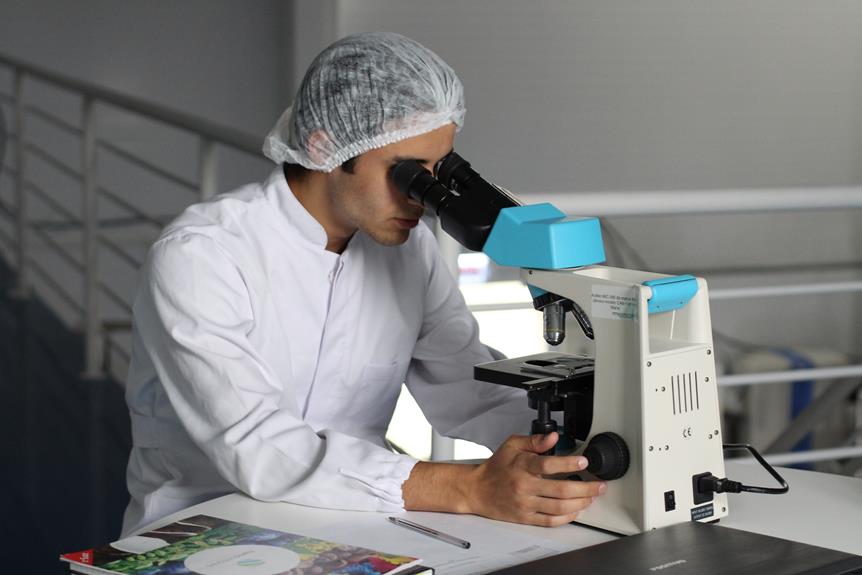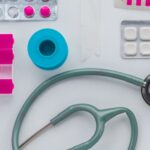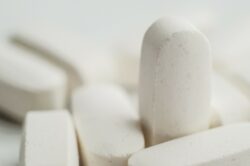Medical Devices & Procedures
The U.S. market boasts approximately 175,000 different medical devices, regulated by the FDA's Center for Devices and Radiological Health. These instruments, indispensable in modern healthcare, range from basic thermometers to sophisticated surgical robots. This article provides an in-depth exploration into the intricate world of medical device regulations, approval processes, and potential risks, offering valuable insights for professionals navigating this complex and vital aspect of healthcare.

Key Takeaways
- Medical devices range from thermometers to robotic surgical instruments and there are approximately 175,000 different medical devices on the U.S. market overseen by the FDA's CDRH.
- While medical devices generally improve and extend lives, there are instances where lax oversight and poor design can result in patient injuries or deaths.
- The level of scrutiny applied to new medical devices depends on factors such as potential risk to patients, with high-risk devices undergoing a lengthy and expensive approval process called Premarket Approval (PMA).
- The majority of medical devices introduced in the U.S. are cleared through the controversial 510(k) process, which has faced criticism for its lack of patient safety assurance and performance evaluation.
Understanding Medical Devices
The understanding of medical devices, which range from simple thermometers to complex robotic surgical instruments, is integral to comprehend their role in healthcare, the potential risks they might pose, and the stringent regulatory processes they must undergo before reaching the market. Ethical considerations are paramount when discussing medical devices; these revolve around patient safety, informed consent, and the fair distribution of healthcare resources. For instance, the development and deployment of expensive, high-tech devices can potentially increase healthcare costs, thereby affecting accessibility for certain patient groups. Consequently, it's crucial to balance the need for innovation with the ethical imperative of equitable care. Understanding medical devices in this comprehensive way can guide healthcare providers, policy makers, and patients towards more informed and ethical decisions.
Risks Associated With Medical Devices
Despite providing significant benefits to patient care, medical devices can also present potential risks, including malfunction, infection, and adverse reactions, all of which require vigilant oversight. These complications can severely compromise patient safety. Ethical concerns arise when the pursuit of medical advancement overlooks these potential hazards. The integrity of the healthcare industry relies on the balance between innovation and safety. Adverse events can stem from device failures, incorrect use, or unexpected patient reactions. Furthermore, the potential for cybersecurity threats in modern, connected devices adds another level of risk. Therefore, it is imperative that manufacturers, regulatory bodies, and healthcare providers continually evaluate and address these risks, maintaining a relentless focus on patient safety and ethics within the realm of medical devices.
The Process of Medical Device Market Entry
Navigating the process of medical device market entry involves a complex mix of regulatory compliance, stringent testing, and thorough documentation, and it serves as a critical pathway to ensuring patient safety and device efficacy. The impact of medical device market entry on patient safety is profound, as it determines the quality of devices available to patients. Regulatory agencies play a pivotal role in this process, scrutinizing every aspect of device production and implementation. Their role is to ensure the effectiveness of medical devices, thereby safeguarding patient health. Prior to market entry, devices undergo rigorous evaluations and clinical trials to ascertain their safety and effectiveness. This process, while exhaustive, is vital in maintaining high healthcare standards and patient safety.
Overview of Premarket Approval (PMA)
Often utilized for high-risk medical devices, the Premarket Approval (PMA) process serves as the U.S. Food and Drug Administration's (FDA) most stringent regulatory pathway, and it involves a comprehensive scientific and regulatory review to evaluate the safety and effectiveness of these devices. The PMA process timeline varies, but it generally encompasses preclinical laboratory and animal testing, clinical trials on humans, and an extensive review of the manufacturer's quality systems. Challenges in the PMA approval process include the complexity of the process, time-consuming evaluations, and high costs. The process also involves a thorough risk-benefit analysis and post-market surveillance to ensure sustained safety and efficacy. Despite these challenges, the PMA remains a critical process in ensuring the highest level of patient protection.
Unpacking the 510(k) Fast-Track Approval
In contrast to the rigorous Premarket Approval process, the 510(k) Fast-Track Approval, used by a significant number of medical device manufacturers, streamlines the procedure for device clearance, yet raises concerns regarding patient safety and device efficacy. The 510(k) process improvements have primarily aimed at reducing timelines for device approval, allowing for quicker patient access to innovative technologies. However, this expedited process has drawn criticism due to patient safety concerns in medical device approvals. Critics argue that the fast-track approval might overlook potential risks, as it relies heavily on the comparison of a new device to an existing one, rather than comprehensive clinical testing. This has sparked ongoing debates on the need to strike a balance between accelerating device innovation and ensuring patient safety.
Home Use Medical Devices
Amid the rapid advancement of healthcare technology and the rise in home healthcare services, a variety of medical devices, designed for use within the comfort of one's own home, have emerged, offering convenience and autonomy to patients, but also posing unique challenges for safety and proper usage. Implementing safety measures for home medical devices is crucial, including proper device operation and maintenance, and understanding potential risks or side effects. These devices can have a significant impact on patient outcomes, often improving quality of life and promoting independence. However, the effectiveness and safety of such devices rely on appropriate patient education and support mechanisms. Therefore, stringent measures should be enforced to ensure the safe and effective use of home medical devices.
Recall Procedures for Medical Devices
We must now turn our attention to the important procedures involved in the recall of medical devices. Recall procedures are imperative to maintaining patient safety. When health risks associated with a medical device are identified, the manufacturer or the U.S. Food and Drug Administration (FDA) initiates a recall. This involves the withdrawal of the product from the market, public notifications, and actions to address the device's issues. Recalls are classified into Class I, II, and III, based on the potential health hazards. Class I recalls, the most serious, involve devices that could cause serious health problems or death. While the FDA can request a recall, it primarily relies on the manufacturers' voluntary action, emphasizing the importance of ethical practices in ensuring patient safety.
Classification of Medical Device Recalls
As we delve deeper into this topic, it is essential to understand that medical device recalls are classified into three categories, each representing different levels of potential health hazards. This classification of medical device recalls is crucial in determining the severity and urgency of the corrective action needed. Class I recalls represent a situation where there is a reasonable probability that the use of, or exposure to, the device will cause serious health consequences or death. Class II recalls pose a potential risk of temporary or medically reversible health issues. Lastly, Class III recalls are those where the use of the device is not likely to cause adverse health consequences. The impact of medical device recalls on patient safety is largely determined by this classification system.
Case Studies of Medical Device Recalls
While it is true that the vast majority of medical devices are safe and effective, there have been notable instances where devices have been recalled due to various safety concerns, which we will explore in the following case studies. These case studies of medical device failures highlight the potential dangers that can arise from faulty devices. For instance, a recall occurred on a widely used heart valve after it was linked to multiple patient deaths. In another case, a type of hip implant was recalled owing to a high failure rate causing severe patient discomfort and further surgeries. The impact of medical device recalls on patient safety is significant, often leading to additional medical procedures, long-term health implications, and psychological distress.
The Concept of Market Withdrawals in Medical Devices
In the landscape of medical devices, there are two primary actions manufacturers may take when a product may not meet safety standards or perform as intended: one is issuing a recall, and the other is initiating a market withdrawal. Market withdrawal implications can vary, but often involve the cessation of production and distribution, and potentially a revision or discontinuation of the device. Such decisions are typically driven by identified risks, adverse event reports, or non-compliance with regulatory standards. Patient compensation for market withdrawals can be sought if harm has been caused due to the medical device. This often necessitates legal action, requiring the demonstration of a direct relationship between the device in question and the harm endured by the patient.
The Role of FDA in Medical Device Regulation
Through rigorous oversight and enforcement of established standards, the FDA plays a fundamental role in the regulation of medical devices for the safety and health of consumers across the United States. The FDA's role in ensuring medical device safety encompasses reviewing premarket submissions, investigating adverse event reports, conducting inspections, and enforcing compliance with regulatory requirements. The impact of globalization on medical device regulation has necessitated the FDA to collaborate with international partners to harmonize standards and facilitate regulatory convergence. This global approach helps to maintain high safety standards and allows for a uniform, efficient regulatory process that supports innovation while ensuring that these devices are safe and effective for the global population.
Emerging Trends in Medical Device Technology
As we delve into the realm of emerging trends in medical device technology, it becomes clear that the sector is evolving rapidly, and with it, the potential to revolutionize patient care and treatment outcomes is growing. The impact of artificial intelligence on medical devices is profound, enabling more efficient diagnosis, personalized treatment, and predictive analytics. Furthermore, the advancements in wearable medical devices are transforming patient monitoring, allowing continuous tracking of vital signs and early detection of abnormalities. These groundbreaking technologies promise enhanced patient autonomy and better health outcomes. However, they also present new challenges in terms of data privacy and security, requiring robust safeguards to ensure patient trust and safety.
Medical Procedures Involving Medical Devices
Modern healthcare's reliance on medical devices is evident in a multitude of procedures, with their usage spanning from diagnosis to treatment and recovery. The advent of medical device innovation has revolutionized healthcare practices, making procedures less invasive, more efficient and often, more effective. From imaging devices, such as MRI and CT scanners used for diagnosis, to surgical instruments and implants used for treatment, these innovations play a critical role. However, the integration of these devices in medical procedures also brings forward the important issue of patient safety. The design, functionality, and maintenance of medical devices directly impact patient outcomes. Therefore, maintaining stringent standards for their testing, approval and monitoring is essential to ensure patient safety and enhance the overall quality of healthcare.
Legal Aspects of Medical Devices
Navigating the complex landscape of medical device regulations and compliance is vital for manufacturers, and it also plays a significant role in ensuring patient safety. The legal aspects of medical devices encompass a myriad of ethical considerations. These include the obligation to test the devices rigorously for safety and efficacy, and to provide complete and accurate information to users. Liability issues arise when devices fail to perform as expected, leading to patient harm. Manufacturers can face legal consequences, including hefty fines, product recalls, and damage to corporate reputation. Strict adherence to regulations and ethical standards is not just legally sound—it is a critical component in maintaining public trust and ensuring that medical technology continues to advance patient care.
Future Prospects in Medical Devices and Procedures
Numerous advancements in technology are paving the way for the development of over a thousand innovative medical devices and procedures, promising significant improvements in patient care and medical outcomes. As these future advancements emerge, they bring hope for more accurate diagnosis, efficient treatments, and enhanced patient comfort. However, alongside technological progress, ethical considerations also come to the forefront. The rapidly evolving landscape of medical devices necessitates a continued focus on patient safety, data privacy, and informed consent. Balancing the drive for innovation with the need for ethical integrity will be crucial. Ultimately, the future prospects in medical devices and procedures hold immense potential, but they must be approached with care, responsibility, and a commitment to upholding the highest standards of medical ethics.
Frequently Asked Questions
How Is the Cost of Medical Devices Determined and Who Bears the Cost?”
The cost of medical devices is determined by factors such as research and development, manufacturing, and regulatory policies. Market competition and device accessibility also play significant roles. Typically, the cost is borne by healthcare providers and patients, either directly or through insurance. However, various stakeholders, including insurance companies and government health programs, may negotiate prices to alleviate the financial burden on patients.
What Measures Are Medical Device Manufacturers Taking to Reduce the Environmental Impact of Their Products?”
Medical device manufacturers are increasingly prioritizing sustainability in their production processes. They are incorporating eco-friendly materials in the design and manufacturing of their products to reduce environmental impact. Sustainable manufacturing practices such as energy efficiency, waste reduction, and recycling are also being employed. These efforts not only contribute to environmental preservation but also enhance the corporate image of these companies as they demonstrate their commitment to sustainable development.
What Role Does Artificial Intelligence Play in the Development and Operation of Medical Devices?”
Artificial intelligence (AI) plays a pivotal role in the development and operation of medical devices. It aids in predictive analysis, enhancing the efficiency and accuracy of diagnostics and patient monitoring. Furthermore, AI ethics come into play, ensuring the responsible use of AI in medical applications. This involves considerations such as patient privacy, data security, and ensuring AI-driven devices provide reliable and unbiased results to uphold patient safety and quality of care.
How Is Patient Data Privacy Maintained When Using Digital Medical Devices?”
Patient data privacy in digital medical devices is a critical concern in the healthcare sector. Measures include strong encryption protocols, stringent access controls, and regular audits. The concept of device interoperability is essential in ensuring secure data transmission between devices. Digital ethics play a role in defining the boundaries of data usage and privacy. Educating patients and healthcare professionals about potential risks and safeguards is also part of the comprehensive approach to maintaining data privacy.
What Are the Steps and Procedures for Patients to Report Problems or Adverse Effects Caused by a Medical Device?”
Patients can report problems or adverse effects caused by a medical device through the FDA's MedWatch Voluntary Reporting Form. This step-by-step process involves providing personal contact information, describing the problem, and identifying the device. Device recalls are often prompted by such reports. Additionally, patient education about the proper usage and potential risks of medical devices is crucial in preventing adverse effects and ensuring prompt report of any issues.
Conclusion
In the complex world of medical devices, meticulous regulation and rigorous testing are paramount. Like a lighthouse guiding ships in a stormy sea, stringent oversight prevents the potential dangers of flawed devices from harming patients. Advances in technology continue to reshape the landscape, promising enhanced patient care. However, it remains imperative to strike a balance between innovation and safety, ensuring that every medical device serves its intended purpose without posing undue risks to patient health.

This post has been generated by AI and was not reviewed by editors. This is Not legal advice. Please consult with an attorney.




